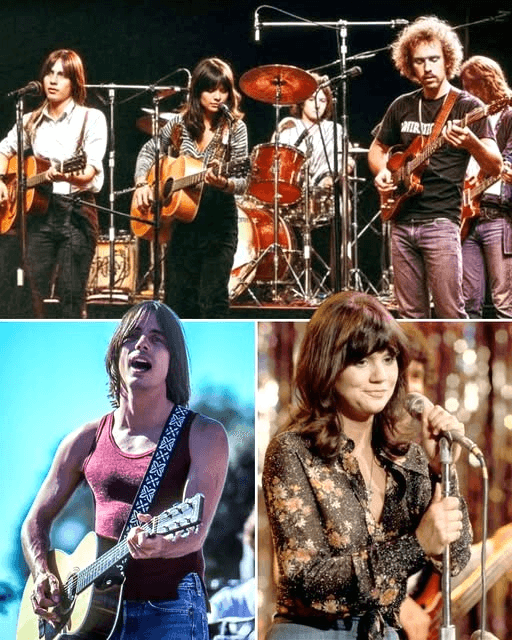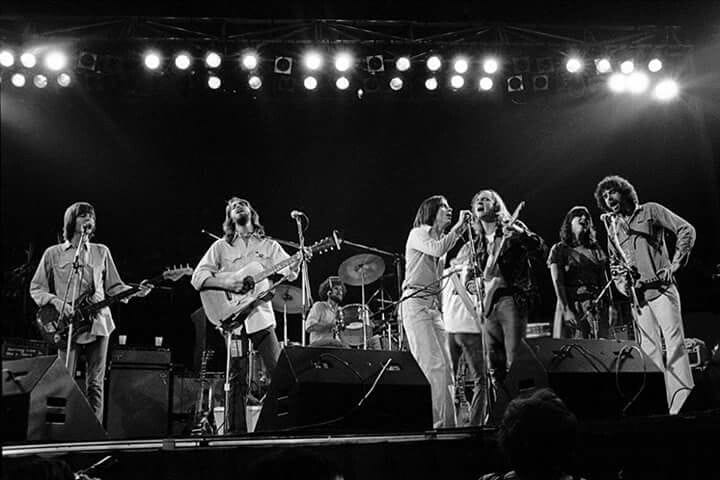In 1974, something special happened in the world of rock. It wasn’t just a year of chart-toppers and sold-out shows—it was a moment when the California sound found its heartbeat through a close-knit circle of artists: The Eagles, Linda Ronstadt, and Jackson Browne. What began as casual collaborations became the foundation for an era of music that still resonates today.

Long before they became headliners, Glenn Frey and Don Henley were cutting their teeth as members of Linda Ronstadt’s backing band. Night after night, they refined the harmonies that would later define The Eagles. Their sound—part country, part rock, all soul—was born on the road with Ronstadt, who unknowingly provided the stage for their musical evolution.
Meanwhile, Jackson Browne, a close friend and fellow architect of the Laurel Canyon scene, played a pivotal role in shaping their early success. It was Browne who began writing the song Take It Easy, only to get stuck after the now-iconic opening line. Frey stepped in with a clever second verse, and just like that, The Eagles had their first hit. The song’s breezy charm, paired with tight harmonies and sun-soaked spirit, became an anthem for the 1970s.
That same year, Desperado solidified The Eagles’ image as rock’s poetic outlaws. With its mournful lyrics and haunting melody, the track was more than a song—it was a statement. Frey even learned piano specifically to capture the right saloon-style tone for the opening. Not long after, Ronstadt recorded her own stunning version of Desperado for her album Don’t Cry Now. Her rendition, raw and velvet-soft, added a new emotional depth that only she could deliver.
Behind the scenes, these musicians weren’t just collaborators—they were family. Frey and Henley often camped out at Jackson Browne’s Echo Park apartment, sharing ideas deep into the night. Ronstadt, already a star in her own right, gave them their first shot—setting the stage for what would become a musical empire. Even small, forgotten moments—Henley’s worn cowboy boots tapping during studio sessions, or Frey teasing Browne over unfinished lyrics—built the folklore that fans still adore.
By the close of 1974, The Eagles had taken flight, but the roots of their sound remained grounded in those early friendships and jam sessions. Together, this trio of artists created more than music—they built a legacy. The chemistry, the camaraderie, and the unfiltered creativity of that time captured something timeless: a blueprint for rock’s golden age, forged in harmony and dusted with stardust.




